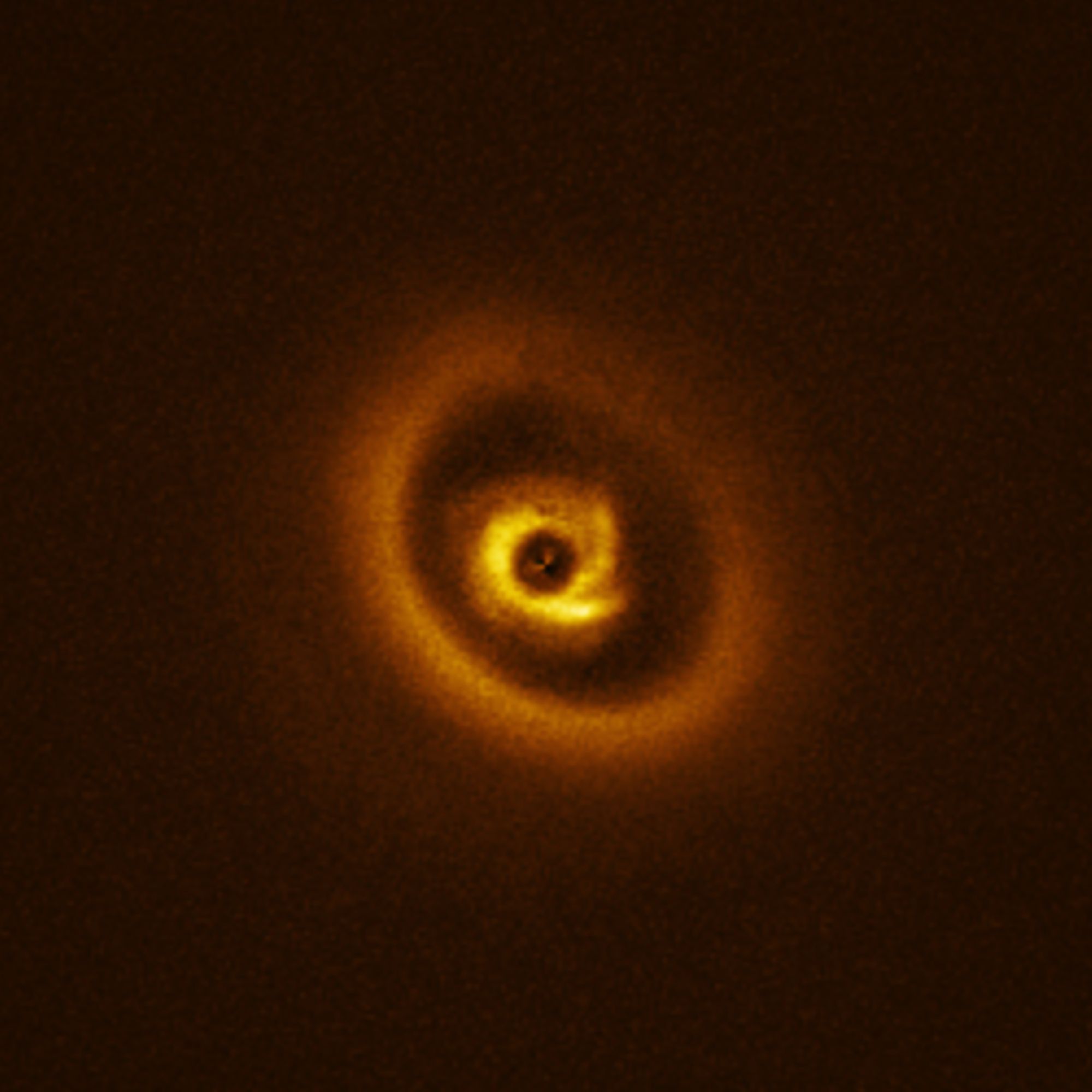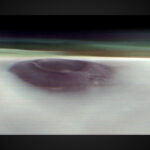นักดาราศาสตร์อาจถ่ายภาพดาวเคราะห์ที่กำลังอยู่ในกระบวนการก่อตัวได้สำเร็จ ซึ่งนับเป็นความก้าวหน้าสำคัญในการทำความเข้าใจการถือกำเนิดของระบบสุริยะ
เมื่อเร็วๆ นี้ วงการดาราศาสตร์ได้ให้ความสนใจกับภาพถ่ายดาวฤกษ์ อาร์ไอเค 113 (RIK 113) ซึ่งถูกห้อมล้อมด้วยกลุ่มแก๊สและฝุ่นละออง หรือที่เรียกว่า “จานดาวเคราะห์ก่อนเกิด” (protoplanetary disc) ภาพนี้ไม่เพียงแต่เผยให้เห็นความสวยงามของปรากฏการณ์ทางดาราศาสตร์ แต่ยังอาจเป็นหลักฐานชิ้นแรกที่บ่งชี้ถึงการมีอยู่ของ “ดาวเคราะห์วัยเยาว์” ที่กำลังก่อตัวขึ้นภายในจานดังกล่าว
จานดาวเคราะห์ก่อนเกิดเหล่านี้เป็นคุณสมบัติทั่วไปที่พบได้รอบดาวฤกษ์อายุน้อย และเป็นแหล่งรวมของสสารทั้งหมดที่จำเป็นสำหรับการสร้างดาวเคราะห์ เมื่อเวลาผ่านไป สสารในจานจะเริ่มรวมตัวกันภายใต้แรงโน้มถ่วง ก่อตัวเป็นวัตถุขนาดใหญ่ขึ้นที่เรียกว่า “ดาวเคราะห์ก่อนเกิด” (protoplanets) หรือ “ตัวอ่อนของดาวเคราะห์” (planetary embryos) วัตถุเหล่านี้จะสร้างช่องว่างในจานฝุ่น ทำให้เกิดโครงสร้างรูปวงแหวนที่ซับซ้อน ซึ่งสามารถมองเห็นได้ในภาพถ่ายล่าสุด
ก่อนหน้านี้ ความซับซ้อนของจานดาวเคราะห์ก่อนเกิดนี้ถูกเปิดเผยครั้งแรกโดยกล้องโทรทรรศน์วิทยุ ALMA ที่ตีพิมพ์เมื่อปีที่แล้ว ซึ่งผลลัพธ์ได้แสดงให้เห็นถึงช่องว่างภายในจานที่บ่งชี้ถึงการมีอยู่ของวัตถุคล้ายดาวเคราะห์ที่ฝังอยู่ภายใน
การค้นพบดังกล่าวได้กระตุ้นให้นักดาราศาสตร์ทีมอื่น ซึ่งนำโดย ดร. คริสเตียน กินสกี (Christian Ginski) จากมหาวิทยาลัยกัลเวย์ (University of Galway) ประเทศไอร์แลนด์ ดำเนินการสังเกตการณ์เพิ่มเติมโดยใช้เครื่องมือ SPHERE ของกล้องโทรทรรศน์ VLT
ผลการวิเคราะห์อย่างละเอียดพบว่า วงแหวนด้านในของจานมีคุณสมบัติเป็นเกลียวที่น่าสนใจ และที่สำคัญกว่านั้นคือ พบสัญญาณที่เป็นไปได้ของดาวเคราะห์ถึงสองดวงรอบดาวฤกษ์ อาร์ไอเค 113 ซึ่งอยู่ไม่ไกลจากจุดที่กล้องโทรทรรศน์วิทยุ ALMA ตรวจจับได้ในตอนแรก
แม้ว่าในขณะนี้สัญญาณที่ตรวจพบยังคงเป็นเพียงข้อบ่งชี้มากกว่าการยืนยันโดยตรง แต่การที่การศึกษาแยกกันสองชิ้นจากทั้งกล้องโทรทรรศน์วิทยุ ALMA และกล้องโทรทรรศน์ VLT ต่างชี้ให้เห็นถึงการมีอยู่ของดาวเคราะห์อย่างน้อยหนึ่งดวง ถือเป็นผลลัพธ์ที่มีแนวโน้มดีอย่างยิ่งสำหรับการค้นพบครั้งสำคัญในอนาคต ซึ่งจะช่วยให้นักวิทยาศาสตร์ไขปริศนาการก่อกำเนิดของดาวเคราะห์และระบบสุริยะต่างๆ ได้ลึกซึ้งยิ่งขึ้น
ข้อมูลอ้างอิง: ESO/C. Ginski et al.
- Caution: Planets under construction




